| Date: 1945 Feb 24/24 | A/C Type: B-24 J Liberator | SN: 42-51495 | Code: RE | A/C Nickname: | 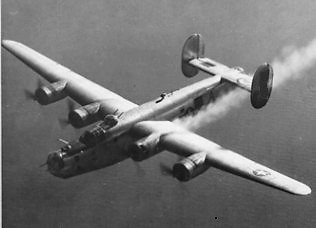 |
|||||
| File: 474 | Airforce: USAAF | Sqn/Unit: 93 BG - 329 BS | Mission/Raid: Misburg (suburb east in Hannover) | |||||||
| 1 | Pilot | Capt. Gene L. Maddocks evaded | 9 | E | T/Sgt. Richard L. Wnuk | |||||
| 2 | Co-pilot | 1Lt. Fred Lakner all crew POW | 10 | Nose turret | S/Sgt. Kennneh W. Johnson | |||||
| 3 | Mission Pilot | Capt. Oscar P. Hoffman | 11 | RWG | S/Sgt. Paul J. Suchcicki | |||||
| 4 | N | 1Lt. Edward N. Anderson Jr | 12 | TG | S/Sgt. Ray G. Micheli | |||||
| 5 | B | 1Lt. Donald N. Winn | 13 | |||||||
| 6 | Extra Nav. | 1Lt. Anthony J. DeCillis Jr | 14 | |||||||
| 7 | Mickey Op. | 1Lt. Gunard C. Strand | 15 | |||||||
| 8 | RO | T/Sgt. Normal E. Fuller | 16 | |||||||
Just before target Misburg at Hannover engine no. 4 gave problems. Target was bombed, but on return also motor no. 1 stopped and crew had to jump. Aircraft came down in the Northeast Polder, 10km south of Lemmer and 6km SW of Schoterzijl (MACR), time 14:30h. All POW, except pilot Maddocks, he evaded and was sheltered until liberation. |
||||||||||
This was a special aircraft with H2X ("Mickey") ground-profile radar on board. It flew in front position of the bomber stream and led the way to the target, the Misburg Deurag-Nerag oil refinery. Two extra operators were on board. Next to that, the normal nine men crew had also the 'Mission-pilot' on board, the officer in charge leading the raid. This was captain Oscar P. Hoffman. About five minutes before bombing, Hoffman called the deputy leader on the radio to say he had problems with his no. 1 engine and was losing altitude. The deputy leader had to take over the lead as master bomber. Target was bombed and also 42-51495 could bomb. After that, Maddocks' B-24 was trailing behind formation. Hoffmann asked the deputy for fighter cover, but soon after that no. 4 engine stopped. Then radio contact was lost (see below). P-51 Mustangs guided the straggler on the way home, but on east side of Lake IJsselmeer (Old Zuyder Sea) an engine caught fire and crew had to use parachutes.
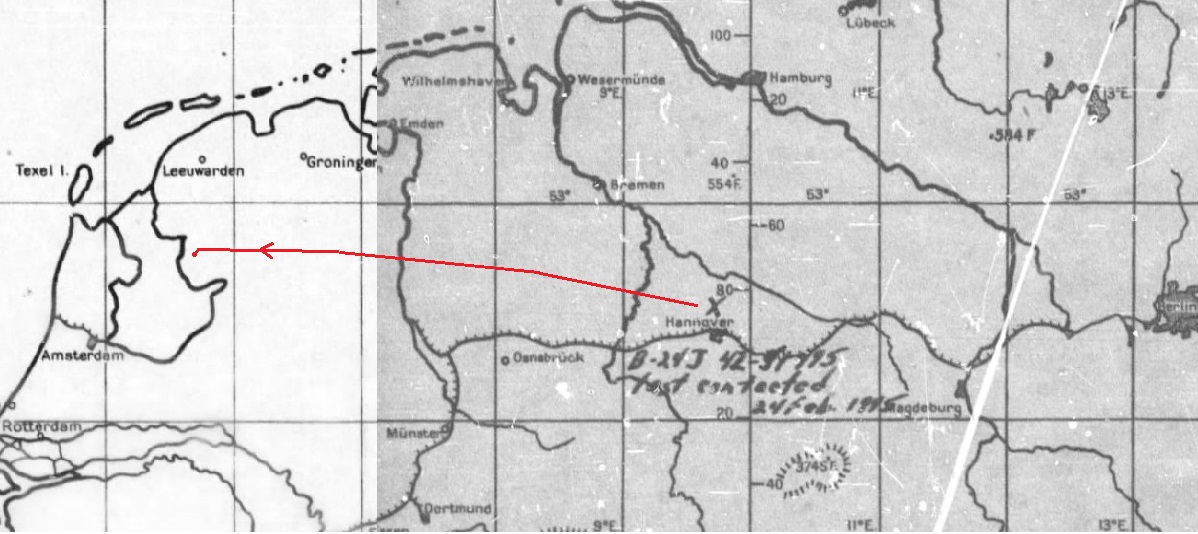
Northeast Polder
The parachutists floated down into the Northeast Polder (Netherlands), on the east side were now village Bant is. Eleven men landed on a half frozen and bare agricultural field, which was enclosed left and south by two wide canals (the Lemstervaart-canal north to south and the Kuindervaart-canal west to east). The eleven did not know that and walked south until they were cornered by the two canals. Here they were hailed by German soldiers and taken POW. With hands above the heads, the group was marched-off towards a truck in prospector-camp Luttelgeest (no. 21 on below map). The truck brought them to the police station in Meppel. The Germans had eleven men and believed they had the whole crew.
Maddocks
Pilot Gene Leroy Maddocks jumped last. He and his B-24J 42-51495 came down on the other side of the Lemstervaart-canal (west of today's village Bant).
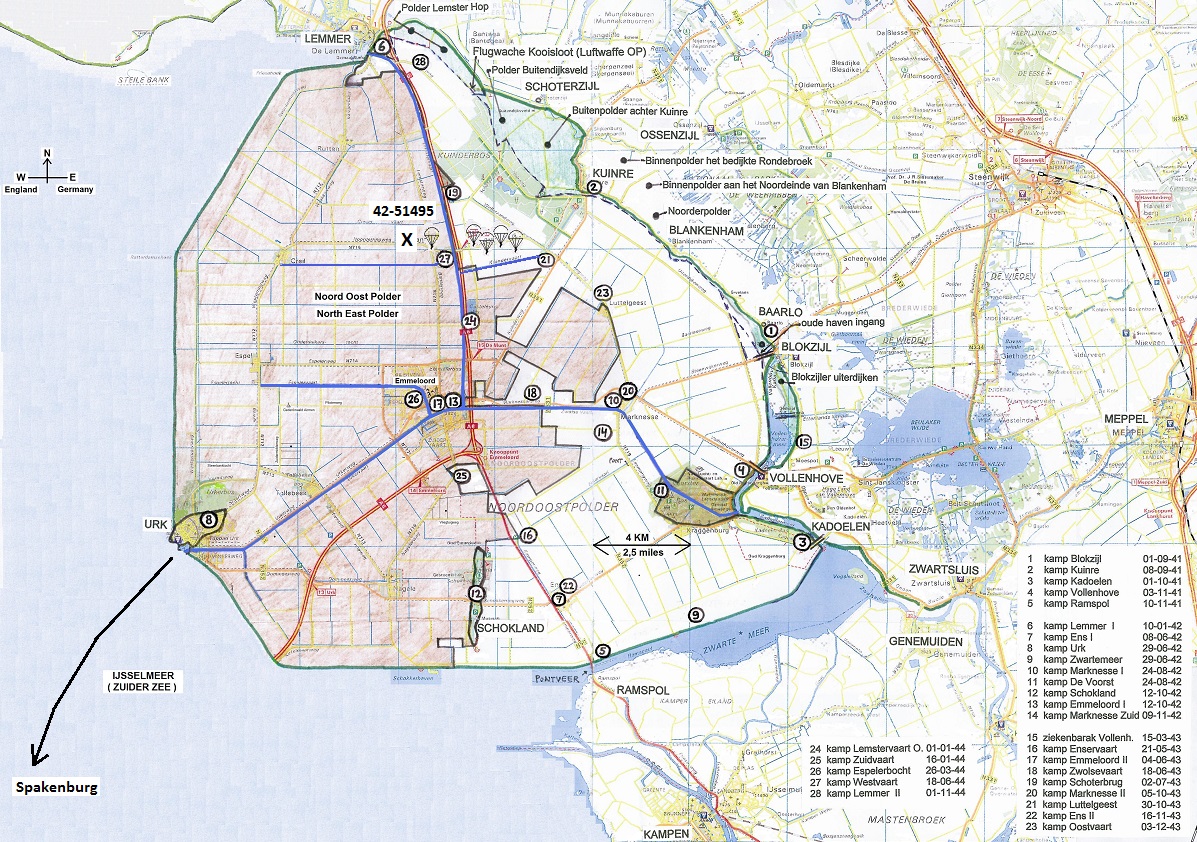
Maddocks' side of the canal was not developed yet (brown area above map). The terrain was muddy and flat (former sea bed), but he could hide behind heaps of clay, frozen bushes and reed fields. Because it was winter, darkness came soon around 17:00h and Maddocks started moving south. He had to cross the Creilervaart-canal and also had to wade through smaller canals. This was not pleasant because the temperature of the air and water were just above freezing point. In the evening he had struggled for about 3 miles when he spotted a boat, a 'canal-freighter', laying still and moored. This was probably in the Lemstervaart-canal between prospector camp no. 13 and 24.
Skipper Peter Blokhuis was fisherman and had a fishing boat type 'Botter' (boat code BU 33). He had volunteered to load a shipment of potatoes in Friesland province (in Dronryp). These were much needed by the starving civilians in the cities on the south side of the Lake. In the winter of 1945, the Germans had taken most food from Holland to Germany. In northern province Friesland farmers had still some quantities potatoes in storages under ground and Blokhuis came loaded via canals from Friesland to Lemmer. From Lemmer he could not sail to his home port Spakenburg because the southwestern wind had blown all the ice on the lake into Lemmer-bay which prevented outgoing ships to leave the harbor. Blokhuis decided to go via the canal in the polder to get to Urk and sail from there.
At 21:00 in the evening they were halfway and stopped for the night in a side channel or basin. On board were skipper Peter (Pé) Blokhuis, his 15 year old son Willem Blokhuis and deckhand Wout de Jong. Then came a knock on the small door under the front deck. A man in a strange wet overall asked for "whaotte, whaotte". Wires with electrical plugs were hanging from the overall. They realized this was an Allied pilot on the run, asking for water and help. The German penalty for helping a pilot was the execution of all involved. "They do a lot for us", said Wout de Jong. Despite the huge risk, Peter Blokhuis took Gene Maddocks inside and have him dry clothes.
Next morning 25 February 1945, the southwestern wind prevented sailing to Urk. The heavy oak Botter filled to the neck with potatoes had to be towed with ropes by the men themselves, walking and pulling on the side of canal Urkervaart towards Urk. Gene Maddocks was helping and fell in a pit every now and then. A German boat with six soldiers was passed. Blokhuis had already seen this boat the previous day ahead of him, but reed fields had prevented a visual on Blokhuis' boat when Maddocks knocked on the door. In Urk they arrived in the small basin in front of the sluice that would open the next day. As evening meal aboard, Blokhuis prepared big thick pancakes. The German guard on the sluice could search the boat and therefore Maddocks was hidden in the forward bow section storage, under the big trawl net ('de Kuul'). On the Lake, Maddocks came on deck, explaining the fishermen the type of aircraft that passed over high in the sky.
On the Lake (Old Zuyder Sea) they were not halted and searched by the German Wasserschützpolizei (military water police with light Flak and mixed crew of German police with Dutch Waffen-SS and collaborators). Also in Spakenburg-port the boat was not searched by the Germans. In the evening Blokhuis walked with Maddocks to his house and kept him hidden there for two days.
Photo below. Peter Blokhuis in the 1970s. His botter on the Spakenburg-Bunschoten slipway in the background.
The bodies of Allied airmen recovered from the lake were laid down on this slipway and buried in Amersfoort: http://www.zzairwar.nl/dossiers/987.html
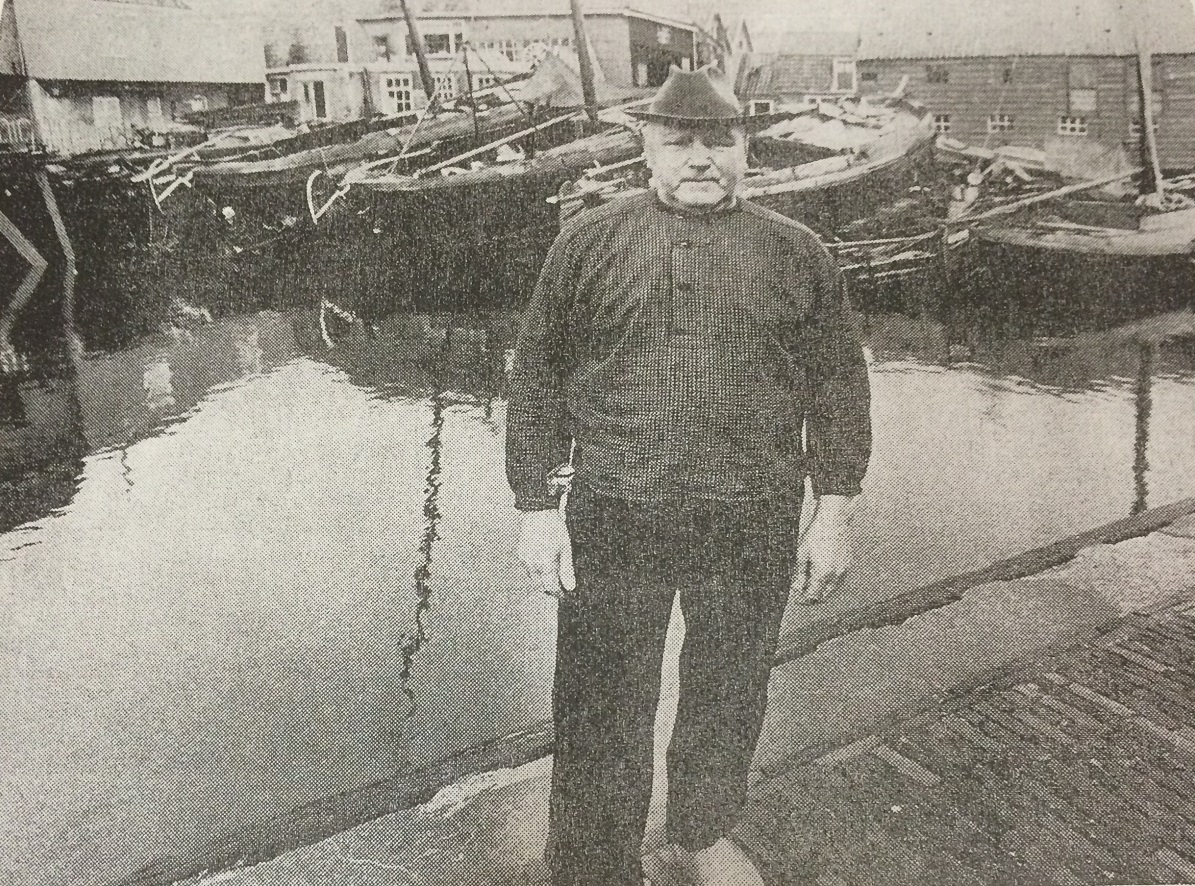
Spakenburg to Blaricum
Resistance men Mr. Baas and Mr. L. Duyst (later school teacher in Spakenburg) had heard via rumors that Pé Blokhuis had a pilot in hiding. They went there and did not trust the situation. An Allied pilot from unknown crash position, passed all German checkpoints and also claimed to be a captain, but of very young age. Could be a German infiltrator. Mr. Wout Staal was asked for his opinion. Wout Staal's family had a pub in nearby Eemnes (cafe Schippers Welvaren) and had several pilots in hiding in the attic and cellar (in total 52 pilots passed there. Post war he received the Medal of Freedom). Wout took Canadian pilot Lt. Eddy Kryskow with him to the house of Peter Blokhuis. After a few minutes talking, Kryskow saluted to Maddocks and he was cleared. At the farewell, Maddocks shook hands and said 'Goodbye Mr. Blokhuys'. They never had contact again. Maddocks went in hiding with Mrs. Truus van Krimpen and in the villa of Mrs. and Mr. Ties Kruize in Blaricum. In and around this villa more pilots were under ground. The front line came very close to them in April 1945, movement was not possible. Liberation came on May 7, 1945.
Below. Gene Maddocks with daughter Mrs. Sieke Broekema-Kruize on May 7 1945.
She was courier in the resistance and wears a resistance-band around the arm on liberation day.
Maddocks returned twice to Holland between 1957 and 1968 to the Kruize family. He died in 1969.
Unfortunately he never contacted or visited the nearby living brave fisherman Peter Blokhuis.
On above photo this was discussed. Blokhuis said he would have welcomed a sign of life, but it never came to it.
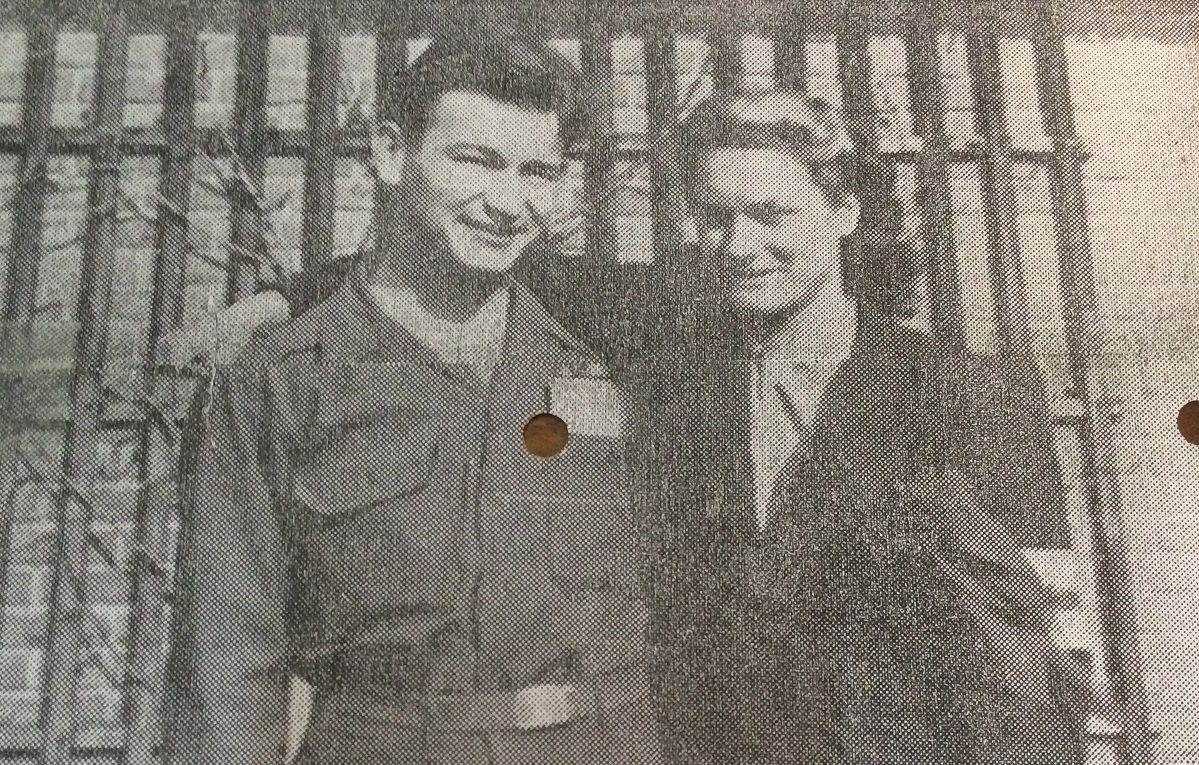
Sources
- MACR
- E & E report Maddocks 1945
- Files and newspaper articles Stichting Urk in Oorlogstijd
- Articles of Historical Society Eemnes and Blaricum 1985 and 1991.
- More on the other pilots at Kruize: http://www.zzairwar.nl/dossiers/341.html
- http://www.teunispats.nl/t5306.htm
On above website, link ' 50x50 mile area' is more info on this crew.
Follow the 50x50 link, allow 10 seconds for loading and CTRL + F, seach on 'Maddocks'.
© ZZairwar (Zuyder Zee Air War)
.